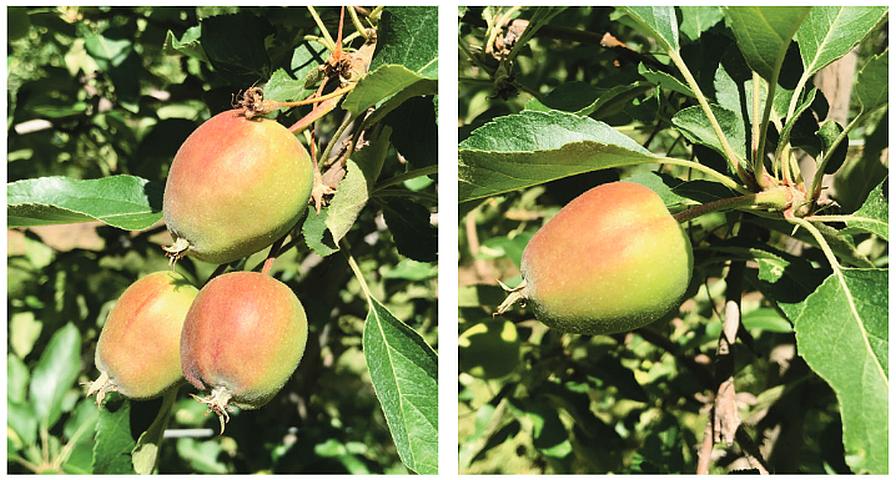Tree Fruit Researchers Excited About Potential of New Chemical Thinners
If anything can keep Phil Schwallier unretired in retirement, it is the topic of crop load management. Throw in the prospect of two new chemical thinners (ACC and metamitron), and the former Michigan State University (MSU) Extension Specialist remains a headliner on the winter lecture circuit.
In Grand Rapids, MI, Schwallier shared top billing at the annual Great Lakes Expo with Anna Wallis, his successor at MSU. A week later, at the New England Fruit and Vegetable Conference, he joined forces (virtually) with Extension Educator Jon Clements and Professor of Horticulture Duane Greene, both from the University of Massachusetts.
Discussion in both cases revolved around 1-aminocyclopropane-1-carboxylic acid, or ACC. Marketed as Accede by Valent USA, the plant growth regulator (PGR) was registered in June of 2021 for use in apples and stone fruit. Although some growers have already used the chemical thinner via experimental use permits (EUPs), widespread availability is not expected until 2024, Schwallier says.
Wallis and Schwallier also addressed metamitron, a photo-synthetic inhibitor used on other crops in other countries as an herbicide. The product — marketed as Brevis by Adama — is being evaluated in the U.S. as a chemical thinner for apples and, according to Schwallier, could be available to U.S. growers in 2024.
“It’s important that you use all the tools, where appropriate,” Schwallier says. “Adjusting the crop load is absolutely the most important orchard practice you can do every year.”
“It’s been a long time since we’ve had a new PGR for thinning — since 6-BA (benzylaminopurine) was introduced over 25 years ago,” Clements says. “Between Accede and metamitron … we have a couple of new PGR-type chemical thinners that we can add to our apple crop load management toolbox.”
ACC
ACC is a precursor to ethylene, the ripening and abscission hormone in plants. It is rapidly but predictably converted to ethylene in the plant, by ACC-oxidase, which leads to fruitlet abscission. Previous trials have demonstrated that Accede has thinning activity if it is applied when king fruit range from 8 to 25 mm in diameter, with strongest thinning activity occurring when fruit diameter is 15 to 20 mm.
Wallis and Schwallier found that ACC, when applied at 8 to 10 mm alone or in combination with MaxCel (6-benzyladenine, Valent BioSciences) and/or ProTone (s-abscisic acid, Valent BioSciences), provide some thinning. They determined that the product may be best used at this time as part of a program that includes other thinning applications at bloom or petal fall.
“We had hoped this one application would be sufficient to get the crop load down,” Wallis says. “Unfortunately, we still under-thinned, and we didn’t see a real dramatic difference between the different treatments. But I think it demonstrates clearly that this would be really useful as a thinner but needs to be included in a combination with other treatments, starting at earlier timings or additional later timings.”
Clements conducted his own trials of ACC through EUPs in five Massachusetts orchards. Several varieties were tested, with ‘Golden Delicious’ and ‘Gala’ types appearing to be more sensitive to Accede than ‘McIntosh’ types, according to Clements.
Growers should not rely on Accede to do all of their thinning, Clements stresses. “You’re not going to wait until 15 to 20 mm and go out with Accede and do your thinning. As Phil and Duane promote, start early, thin often, and be cognizant of fruit growth stage, rate, timing, and weather,” he says. “Accede would be advised if further thinning is desired after the 8 to 12 mm fruitlet stage. Use the fruitlet growth rate model to assess the need for further thinning.”
METAMITRON
Metamitron was applied at 0.5, 1, or 2 pints per acre at 8 to 10 mm or 18 to 20 mm. The rate of 0.5 pt had thinning activity closest to the desired crop load or commercial standard. A greater thinning effect occurred at 10 mm than 20 mm. Minimal phytotoxicity was observed only for a high rate at 10 mm.
“Most certainly I think you should try (metamitron) when it becomes available to you,” Schwallier says. “It appears to work well in cooler temperatures, perhaps better than Sevin and NAA (naphthalene acetic acid) or MaxCel. But that remains to be sorted out. The phytotoxicity is insignificant. And fruit size in both of these products is really related to the crop load. If you have your thinning done properly, your fruit size will be increased.”
TURNING TO PEACHES
Apples aside, enthusiasm accompanied Wallis’ trial results involving ACC and peaches. Presently, chemical thinning is not an option for stone fruit, meaning crop load management is conducted by hand or mechanical (string) thinners. But Wallis found that ACC provided considerable thinning when applied at bloom, dropping the time to hand-thin by half compared to untreated trees.
“ACC is a landmark change in technology for thinning peaches,” Schwallier says. “For the last three or four-thousand years, we’ve been thinning peaches by hand. Now, we can do it chemically.”
‘“This is frankly more exciting on peaches, although we have a lot to learn here,” Clements says.











